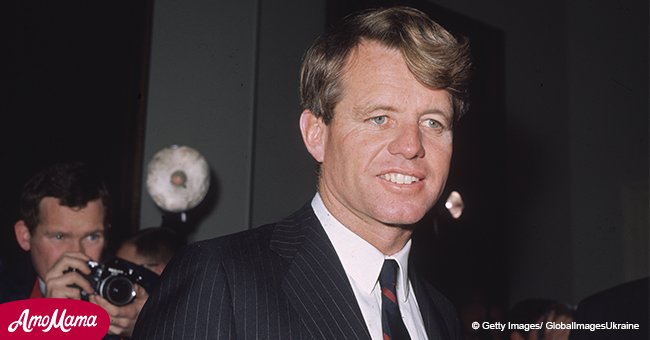
Busboy who held dying Robert F. Kennedy recalls the horror of the assassination
The man who was at the senator's side when he died has shared the events of that night, and how he felt in the aftermath of the shooting.
Juan Romero was just 17 years old on June 5, 1968, when Robert F. Kennedy was shot in the Ambassador Hotel shorting after shaking the busboy's hand.
“I remember shaking his hand, and as soon as he let go, we heard those terrible popping sounds,” Romero told NY Daily News on the 50th anniversary of the shooting. “I turned to my left, and all I could see was a small group of people, maybe 10 feet away, just struggling, pushing, fighting, wrestling.”
When he looked back at the man who had just won California’s Democratic presidential primary, Kennedy was lying splayed on the floor. Romero's first thought was that someone had pushed him to the ground to protect him.
Thinking Kennedy needed help getting up, Romero ran to him and kneeled next to him. When he placed his hand between the man's head and the cold concrete floor, he suddenly felt a warm stream of blood running down his hand.
Kennedy just kept asking him if everyone was alright, and Romero confirmed that they were.
“He was looking straight at me, and he relaxed his head and turned toward his right and I heard him say, ‘Everything is going to be OK,’ ” Romero recalled. “I thought, OK, he’s conscious, and I tried to put my hand a little lower to open up his windpipe so he could be a little more relaxed.”
Romero called for help, and tried his best to calm Kennedy, telling him that everything would be ok.
Kennedy's wife, Ethel, gently removed Romero from her husband, and when she did the busboy pulled a rosary out of his pocket and showed it to her. He then tried to hand it to Kennedy, who couldn't keep his hands closed around it.
"His hands wouldn’t close. Every time I put the rosary in, it popped out again. So I wrapped it around his thumb and a couple of his fingers and went away,” Romero said.
Just 26 hours later, Kennedy was pronounced dead.
A black-and-white photo of a dying Kennedy with Romero kneeling next to him and holding his head up became the iconic image of the assassination.
In the days that followed, the image was compared to both the crucifixion and the Pieta.
Romero avoided the image as much as possible, not wanting to be reminded of the awful night.
“For a long time, I was so angry. Angry at myself for not being able to do anything. Angry at the police for not protecting him. Angry at God for letting it happen. I was so miserable. I didn’t want to talk about it,” he said.
Romero was in his 60's when he really studied the image for the first time, he realized what other people had seen in the photo that he had been blind to for so long.
"Here was a senator who tried to help minorities, people who couldn’t help themselves, and in the moment when he needed help, here was a Mexican-American busboy trying to comfort him,” Romero said.